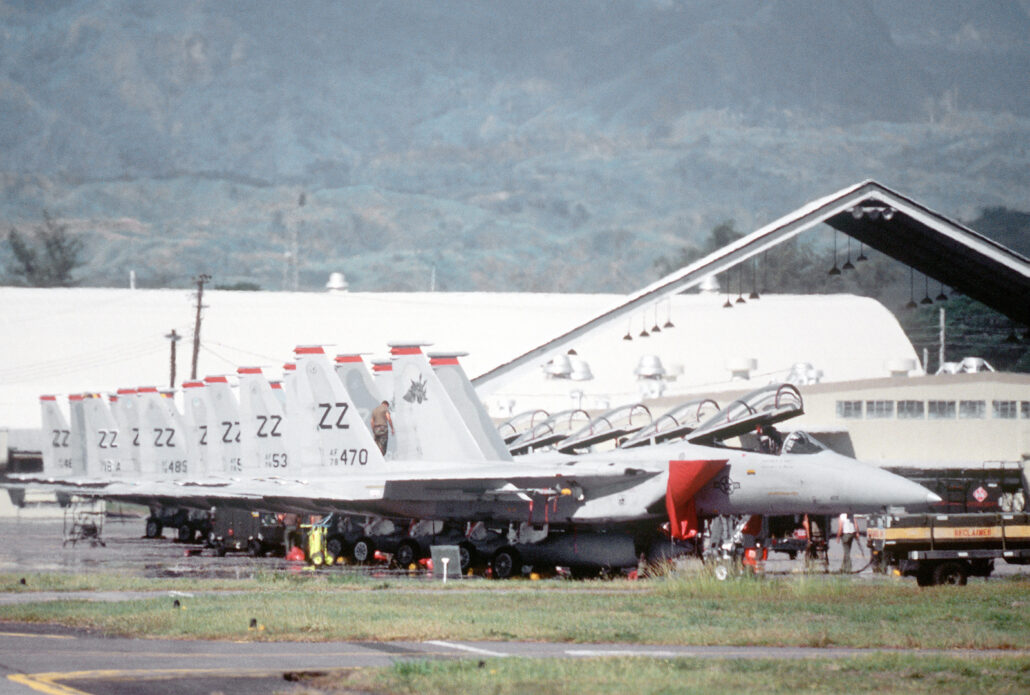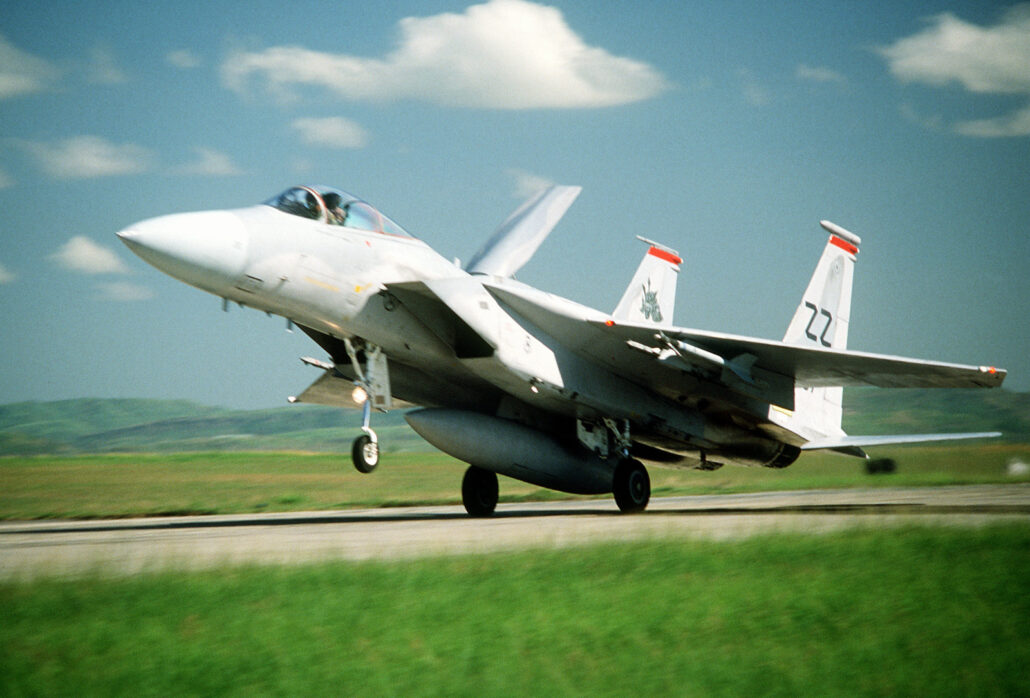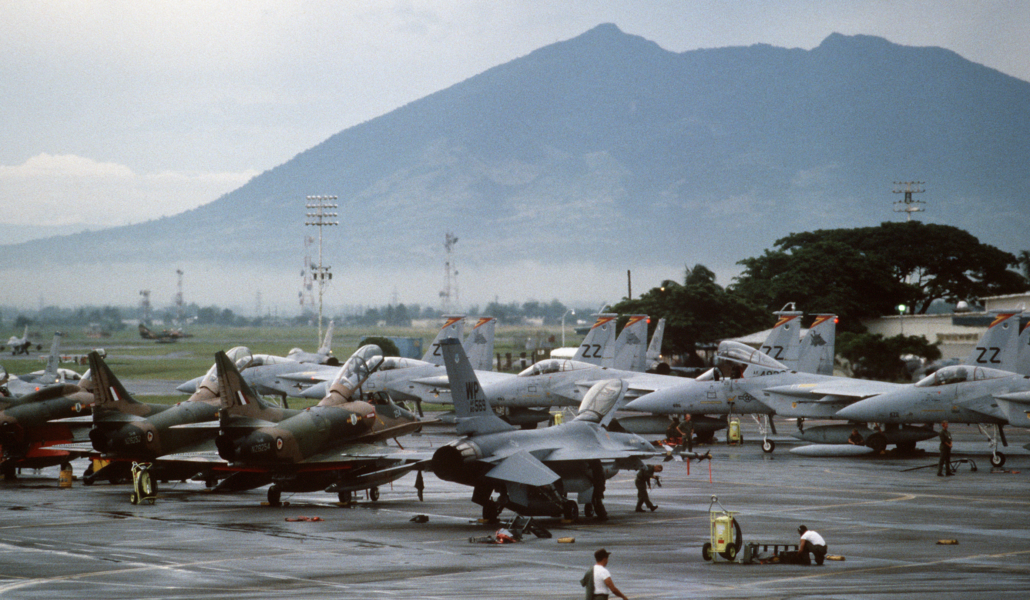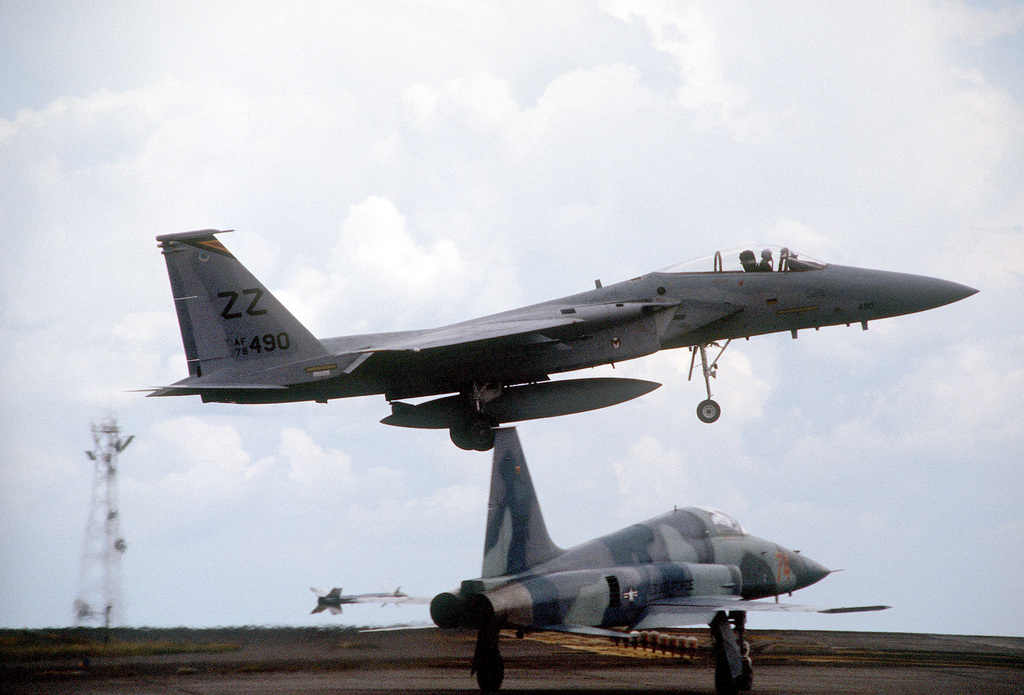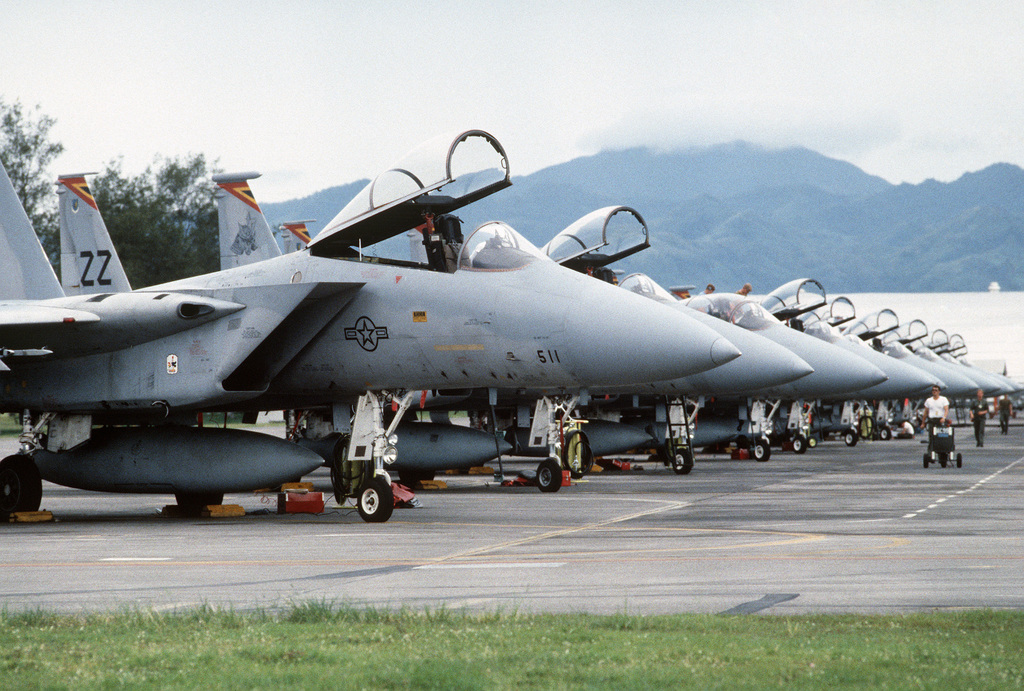
Exercise Cope Thunder was a Pacific Air Forces (PACAF) sponsored exercise initiated at Clark Air Base, the Philippines, in 1976.Conceived by Brigadier General Richard G. Head, the exercise was devised as a way to give aircrews from across Asia their first taste of warfare in a realistic training environment. The exercise quickly grew into PACAF’s “premier simulated combat airpower employment exercise.
Prior to Operation Desert Storm, less than one-fifth of the U.S. Air Force’s primary fighter pilots had seen combat. While the percentage of combat-experienced pilots has increased in recent years, with the end of the Vietnam War a high percentage of pilots had not experienced combat. Analysis indicates most combat losses occurred during an aircrew’s first eight to 10 missions. Therefore, the goal of Cope Thunder was to provide each aircrew with these first vital missions, increasing their chances of survival in combat environments.
Each Cope Thunder exercise was a multi-service, combat operations exercise corresponding to the intended operational capability of participating units; exercises involved units whose military mission may differ significantly from that of other participating units. Cope Thunder planners took those factors into consideration when designing exercises so participants received the maximum training possible without being placed at an unfair advantage during simulated combat scenarios.
It was not uncommon during Cope Thunder exercises to see Philippine Air Force Northrop F-5, Royal Australian Air Force F/A-18 Hornets, U.S. Navy A-4 Skyhawks, Royal New Zealand Air Force A-4K Skyhawks, Republic of Singapore Air Force Hawker Hunters, stacked up on taxiways awaiting their turn to launch along with USAF F-15 Eagles, and F-16 Fighting Falcons from bases in PACAF, and Alaskan Air Command.
Cope Thunder was moved to Eielson Air Force Base, Alaska, from Clark Air Base, Philippines, in 1992 after the eruption of Mount Pinatubo on June 15, 1991 forced the closure of Clark Air Base.
When the decision was made to relocate Cope Thunder, Air Force officials viewed Eielson Air Force Base as the most logical choice. That decision was based on the close proximity of large areas of military training airspace and the fact that Eielson’s 5055th Range Squadron, to become the 353d Combat Training Squadron in 1993, already maintained and operated three major military air-to-ground training ranges nearby.
Cope Thunder was redesignated Red Flag-Alaska in 2006.
Eielson Air Force Base is home to Cope Thunder, a realistic, 10-day air combat training exercise held up to four times a year.
Each Cope Thunder exercise is a multi-service, multi-platform coordinated, combat operations exercise and corresponds to the designed operational capability of participating units. In other words, exercises often involve several units whose military mission may differ significantly from that of other participating units. Cope Thunder planners take those factors into consideration when designing exercises so participants get the maximum training possible without being placed at an unfair advantage during simulated combat scenarios.
Cope Thunder participants are organized into “Red” defensive forces and “Blue” offensive forces. “White” forces represent the neutral controlling agency.
The defensive force includes ground-control intercept and surface air defense forces to simulate threats posed by potentially hostile nations. These forces generally employ defensive counter-air tactics directed by ground-control intercept sites. Range threat emitters — electronic devices which send out signals simulating anti-aircraft artillery and surface-to-air missile launches — provide valuable surface-to-air training and are operated by a civilian contractor as directed by 353th Combat Training Squadron technicians. The offensive force includes the full spectrum of U.S. and allied tactical and support units. Because the defensive and offensive forces meet in a simulated hostile, non-cooperative training environment, the job of controlling the mock war and ensuring safety falls to the White neutral force.
On an average, more than 700 people and up to 60 aircraft deploy to Eielson, and an additional 500 people and 40 aircraft deploy to Elmendorf Air Force Base, for each Cope Thunder exercise.
Most participating Cope Thunder units arrive a week prior to the actual exercise. During that time, aircrews may fly one or two range orientation flights, make physical and mental preparations, hone up on local flying restrictions, receive local safety and survival briefings, and work on developing orientation plans.
During the two-week employment phase of the exercise, aircrews are subjected to every conceivable combat threat. Scenarios are shaped to meet each exercise’s specific training objectives. All units are involved in the development of exercise training objectives. At the height of the exercise, up to 70 jet fighters can be operating in the same airspace at one time. Typically, Cope Thunder conducts two combat missions
